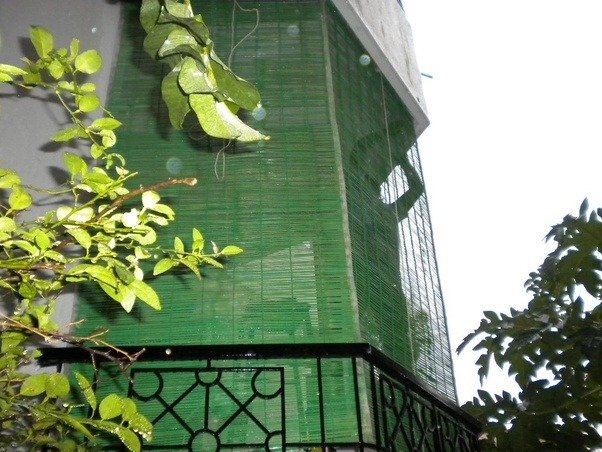We all are becoming aware of the impact each one of us is having on the environment, of our carbon footprint. Therefore, we now know the amount of energy consumed to keep our houses at a comfortable temperature during summers.

Air conditioners of 1.5 ton produce 5.7 kg carbon per day for 8 hours. Also, air conditioners contain HFCs and CFCs that are major contributors to the depletion of the ozone layer. Therefore, they harm our environment significantly.
It is a vicious circle of rising temperatures and using of air conditioners. As the temperature around us is rising, we are increasing our use of air conditioners, which in turn consumes more energy, and the cycle goes on. Therefore, we think of alternatives, which consumes a lot less energy and saves our planet.
-
Keep your blinds closed.
Especially with south and west-facing windows, closing the blinds prevents the house from becoming a miniature greenhouse. Up to 30 per cent of unwanted heated enters from windows. Therefore, utilizing shades, curtains can save up to 7 per cent of bills and lower indoor temperatures by up to 20 degrees.
-
Keep the doors secure
Closing off unused rooms will prevent cool air from filling these areas during the hottest part of the day. It’ll want to capitalize on the cooler night hours, too, letting air flow naturally through your home.
- Use fans in place of A.C
Ceiling fans are a relatively energy-efficient, affordable way to enhance your house’s natural airflow. Like all warm-blooded animals, we naturally throw off heat. That heat warms the air around you, creating a bubble of hot air on all sides of your body. A fan blows away that hot air, allowing cooler air to take its place. In fact, sitting in front of a fan makes you feel cooler by about 4 degrees Fahrenheit, according to California’s Consumer Energy Center. -
Bring in the Outdoors
Well planned plants, shrubs, and vines can fulfill the purpose of air conditioners. Plant shady trees and plants on the east and west sides of the house to block out the sun’s rays. Also, using plants and shrubs as a screen for sunlight can reduce the temperature indoors, and the shaded area beneath them as much as 20 degrees cooler than the surroundings.
-
Breathable Curtains

In order to keep the interiors of our homes, light and airy, during the harsh summers right choice of curtains is important. Opting for cotton and sheers (especially in white or pastel colours) while choosing curtains or layer the windows with jute screens and bamboo shades. Dark synthetic drapes are definitely a no-no in the summer months.
The open weave of burlap curtains, lets the room breathe while filtering light beautifully, and the fabric, while inexpensive, has a rich texture that can be dressed up or down.
-
Cross Ventilate
Strategically opening windows at opposite ends to enable cross ventilation. Although, time plays a crucial role in cross ventilation. During summers, it is between 5.00 to 8.00 am in the mornings and between 7.00 to 10.00 pm in the evening when the air is still pleasantly cool, is the best time to open windows.
- Shut down Appliances
Appliances in the house produce a lot of heat when they are switched on or even plugged in. Thus, switching off electronics and appliances when they are not in use can reduce the amount of heat generated in the house.
A few simple changes in our house can reduce the amount of heat produced and also decrease the temperature of your humble adobe. The harsh and uncomfortable summers can be made cooler without harming the environment much.
Everything in our household consumes energy, but everything that uses energy should be as energy-efficient as possible.



